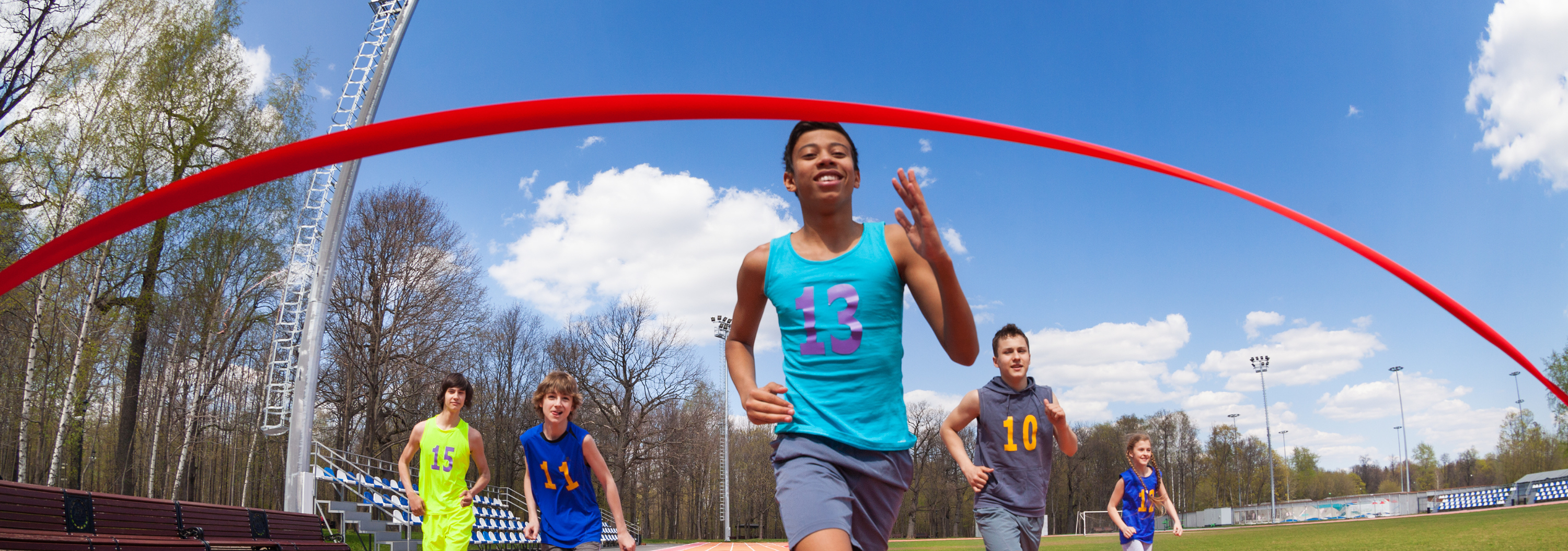PEP’s Running Program Helps Kids Build Self-Confidence
Students Complete 26.2 Miles
On Saturday, June 3, 18 PEP students from four different Day Treatment Centers, and 18 different cities across Northeast Ohio did something they’ve never done before. In partnership with Hyland, and as part of the West Side Catholic Center’s Annual Pancake Run, they completed the final mile of a 26.2-mile journey which began back in January. This final run was the culminating event of months of hard work, friendship-building, learning and growth.
These 18 students are the latest group to complete PEP’s Running Program. In previous years, students who have completed this program have shown unbelievable gains, both as athletes and as individuals. It’s no secret that kids benefit from regular physical activity, no matter what that activity looks like. The Centers for Disease Control notes that regular physical activity like running can not only improve overall physical health and lower kids’ risk for several types of disease, but can also decrease the likelihood of depression and improve overall academic performance.
Michael’s Long Journey
One former Running Program graduate who knows this firsthand is Michael[1]. Michael completed the program in 2019, and in doing so, surprised even himself. In January, Michael came to the program with very little interest in running — or physical activity in general. At the time, he didn’t have a lot of friends at school and didn’t have a great deal of belief in himself in any area of his life. If you asked Michael, he agreed to join the program primarily to get out of class three times each week. However, Michael kept coming back.
Practices in January start with the basics. Kids walk or run a couple laps around the gym, learn how to check and monitor their heart rate before and after exercise, and track their progress toward 26.2 miles. As time goes on, they begin to see their physical endurance gradually increasing. Their status on the milage chart keeps growing, inching them ever closer to their goal of completing an entire marathon’s worth of mileage.
In Michael’s case, something else was happening at practice. He was spending more time with his peers, both in class and throughout the center, creating bonds and sharing experiences with them that would be the foundation of growing friendships down the road. He was also slowly boosting his own self-confidence. His teachers noticed him speaking up more in class and reaching out to friends during free time to initiate activities.
The Regulating Power of Running
Michael’s positive response to the program was beautiful to watch, but also something that no longer surprises us. It’s also something that has research-based support. Dr. Bruce Perry, founder of the Neurosequential Model and author of several books on child development and trauma, notes that pattern, rhythm and repetition can be helpful to help regulate brain centers that may have been negatively affected by traumatic experiences. Running and walking, which are necessarily rhythmic and repetitive in nature, can help the brain to rewire itself over time and leave kids feeling calmer and more focused.
The other beneficial aspect of running and walking are the social interaction they provide. Dr. Perry’s research also notes that social interactions are more palatable and less threatening for children with social challenges when they are parallel, instead of face to face. This type of interaction can be regulating as well and can help kids on the autism spectrum feel more comfortable taking risks and opening up to those around them. Michael’s burgeoning friendships were in no small part a result of his time spent walking with his peers and feeling comfortable to be himself around them.
As Michael crossed the finish line in the final run, his friends were there waiting for him and cheering him on. Afterward, he posed for countless pictures with teachers, family, and friends, with his marathon medal hanging proudly around his neck. The celebration continued over the next few weeks as he and other runners from the program wore their medals to school for days to show to their friends.
PEP’s Running Program Legacy Continues
This spring a new group of kids took on a challenge similar to Michael’s from four years ago. Some of them may have even been kids who, having seen Michael show off his medal in years past, decided to join when the opportunity arose again. Perhaps one of the best things about having a running program at PEP is that running is largely an individual endeavor. Staff running the program preach all season that what matters is how they compete against themselves rather than against their peers. The only goal is to give your best and to try and better today than you were yesterday. For students at PEP, who all face significant challenges, it’s difficult to think of a more suitable metaphor. Your teammates and other runners are there to support you, but ultimately, it is you that must complete the journey, one step at a time.
June 3 was special for our kids, their families, and their supporters. However, the lasting impacts of this event will be noticed for years to come.
To learn more about PEP’s Running Program or to learn more about PEP’s Day Treatment Centers, visit our website. Contact Nicole Molnar, clinical coordinator, at 216-361-7760 ext. 110 or via email to see if a student in your district may be a good fit.
Please note, referrals are made through school districts. Interested parents or caregivers should contact their school administrator.
[1] Not his real name.
Contributed by Alex Baker, Clinical Supervisor, PEP Willow Creek
